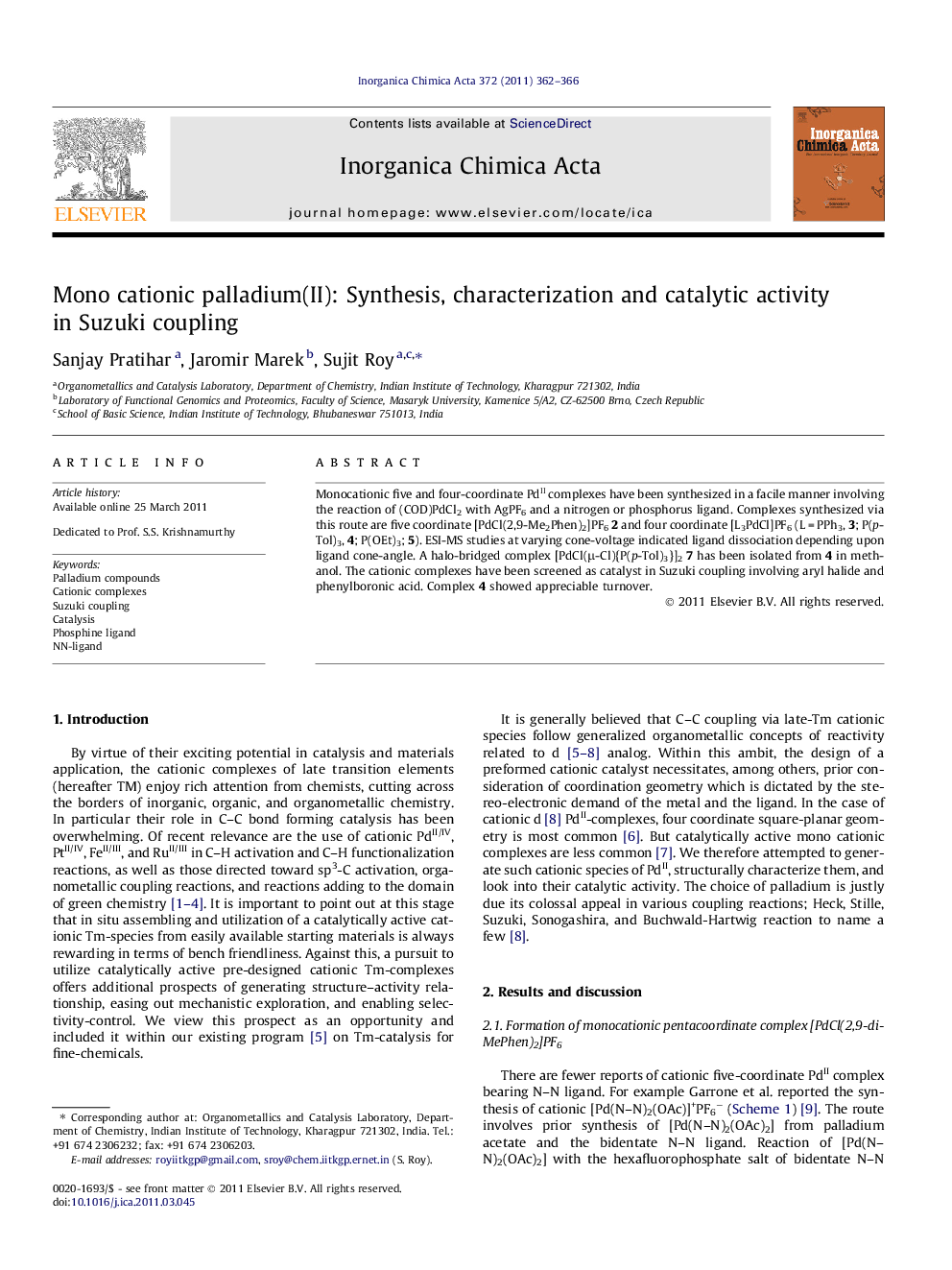| کد مقاله | کد نشریه | سال انتشار | مقاله انگلیسی | نسخه تمام متن |
|---|---|---|---|---|
| 1308913 | 975188 | 2011 | 5 صفحه PDF | دانلود رایگان |

Monocationic five and four-coordinate PdII complexes have been synthesized in a facile manner involving the reaction of (COD)PdCl2 with AgPF6 and a nitrogen or phosphorus ligand. Complexes synthesized via this route are five coordinate [PdCl(2,9-Me2Phen)2]PF62 and four coordinate [L3PdCl]PF6 (L = PPh3, 3; P(p-Tol)3, 4; P(OEt)3; 5). ESI-MS studies at varying cone-voltage indicated ligand dissociation depending upon ligand cone-angle. A halo-bridged complex [PdCl(μ-Cl){P(p-Tol)3}]27 has been isolated from 4 in methanol. The cationic complexes have been screened as catalyst in Suzuki coupling involving aryl halide and phenylboronic acid. Complex 4 showed appreciable turnover.
Monocationic five and four-coordinate Pd(II) complexes [PdCl(2,9-Me2Phen)2]PF6, and [L3PdCl]PF6 (L = PPh3, P(p-Tol)3, P(OEt)3) have been synthesized from (COD)PdCl2, AgPF6 and the corresponding ligand. The cationic complexes show appreciable catalytic activity in aryl–aryl Suzuki coupling reaction.Figure optionsDownload as PowerPoint slideHighlights
► A facile route to cationic palladium(II) complexes.
► (COD)PdCl2 as a convenient source to cationic palladium(II).
► ESI-MS show ligand dissociation and halide exchange in cationic palladium(II).
► Cationic palladium(II) as Suzuki catalyst.
Journal: Inorganica Chimica Acta - Volume 372, Issue 1, 15 June 2011, Pages 362–366